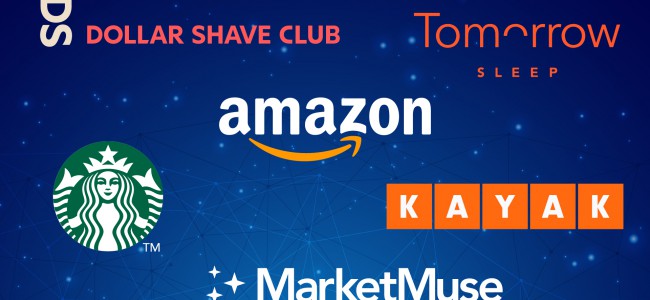Artificial intelligence is more commonplace than ever. From advanced chatbots to the algorithms in search engines, and from art generators to the GPS in your phone. And now more than ever, AI is present in our marketing.
Besides its vital function of carrying out computations and organising data, AI has grown to achieve much more in the advertising industry. It can automate customer service and market research, and help to optimise and refine our campaigns to achieve our projected objectives. With AI handling our data, we can find the right words and the right time to really engage with audiences.
But can AI craft an advertising campaign from start to finish? Can a machine do the job of a creative director? These case studies can show you what happens when you bring AI into your marketing goals.
Creating & Directing Campaigns
First, let’s dive into cases where AI did indeed play a major role in creating an advertising campaign, or at least in influencing its direction.
Mattress company Tomorrow Sleep was able to use MarketMuse, an AI-driven assistant for building content strategies, to substantially improve their marketing strategy.
Using MarketMuse, they learned about key high-value topics as well as where their competitors ranked for each of those topics. Tomorrow Sleep learned what nobody in the market was talking about, then adjusted their content strategy to talk about these vital gaps.
As a result, they established themselves as an expert on those topics. Tomorrow Sleep saw a 10,000% increase of website traffic with 400,000 monthly visitors, ranked for multiple positions in a single search result, and secured the domain authority needed to secure Google’s featured snippet for specific results.
All thanks to an AI’s recommendations of what their content creation team should be discussing.
And they aren’t the only ones. Travel search company Kayak was able to capitalise on the post-pandemic atmosphere thanks to the internal AI platform of New York advertising agency Supernatural Development LLC. This AI collected and analysed data to automatically generate ideas for advertising copy and other marketing materials.
According to Michael Barrett, co-founder and chief strategy officer at Supernatural, their AI collected and combed through consumer data from social media and market research.
Looking at the climate on the internet, it determined both Kayak’s target audience and approach, reaching young, upper-income men using humour over America’s inability to agree on basic facts in politics and pop culture.
The result was a “Kayak Deniers” ad campaign which poked fun at conspiracy theorists. It was a risky move, but Supernatural’s AI helped them to calculate the right approach and language to use.
Even the Dollar Shave Club got in on the action. Working together with AI firm Addition Technologies Inc., they used their AI platform to analyse millions of social media posts to identify themes for use in their products.
Matt Orser, vice president and head of creative at Dollar Shave Club, commented that “It’s like having a machine hive mind that you can just keep asking questions because it has completely consumed all comments on the subject.”
From razors to wet wipes, AI was used to calculate the best way to make them relevant to social media audiences.
And some companies are diving into AI-created solutions. DumDum LLC, an AI marketing consulting firm, answered the brief of Signal Messenger LLC, maker of encrypted messaging app Signal.
DumDum helped to create Signal Messenger’s first major marketing campaign in 2021 with a process they perfected for all their clients. They invited marketers to brief “thinkathon” sessions to discuss their most pressing challenges, then ran those ideas through an AI platform.
The AI then matched them to potential solutions based on its growing pool of behavioural data and consumer surveys, allowing DumDum to provide an outside perspective.
Adjusting & Refining Mid-Campaign
Of course, another major use of AI in ad campaigns, besides computing data, is that it automates a lot of human processes. The most obvious example of this is that invaluable tool for any business: the chatbot.
However, there’s more to AI’s uses than customer service, though it is also one of the most common advantages of it which can boost customer engagement and free up manpower.
In addition to being used to interact with customers, AI is also able to take its computing power and actually make changes based on the data your campaign is receiving. And this application is used by no less than two titans of industry that have become household names: Amazon and Starbucks.
Amazon, one of the largest e-commerce platforms in the world, makes use of AI to carry out what’s known as dynamic pricing.
The AI on its store collects tons of data on its users and their shopping habits. With this information, it is able to adjust its prices accordingly in real time, setting prices more likely to result in a purchase.
As a result, the average product changes cost every 10 minutes, and Amazon changes prices as much as 2.5 million times a day. And it pays off: dynamic pricing was able to boost their revenue by 25%, and the technique is still extensively used by Amazon.
Meanwhile, Starbucks utilises AI in their beloved loyalty cards in conjunction with their mobile app.
Using the purchasing information gathered from these mediums, including location, time of day, and demographics, the coffee shop is able to analyse its users. Predictive analytics then process this information, allowing Starbucks to make more personalised ads for each customer.
With these results, Starbucks is able to refine their offerings more and more over time. So when their customer approaches a Starbucks, they’ll receive promotions or recommendations which are more attractive to them.
A Valuable Tool For Using Data
So as you can see from these case studies, AI is very much in use in ad campaigns! Its computing power has grown enough to collect data and make recommendations, on top of its ability to automate processes.
Tomorrow Sleep and Kayak both got critical market insights from AI, but they were the ones who adjusted their advertising strategies. AI didn’t create their campaigns for them, but it did play an important role in their content creation.
And as we can see from the cases of Amazon and Starbucks, the ability to dynamically respond to the purchasing information and spending habits of customers can lead to more precise and targeted ads and prices. Like the use of chatbots, this leverages AI’s ability to interact with customers quickly with personally tailored ads and offers.
However, any use of AI needs human direction. Like the companies and marketing executives above, we still need to tell AI what we want it to do. And it takes human creativity to capitalise on the data it provides us with.
So breathe a sigh of relief, creative directors: machines can’t replace you. Like all technology, its purpose is to help us do our jobs more efficiently and effectively, including in helping us to be creative.






